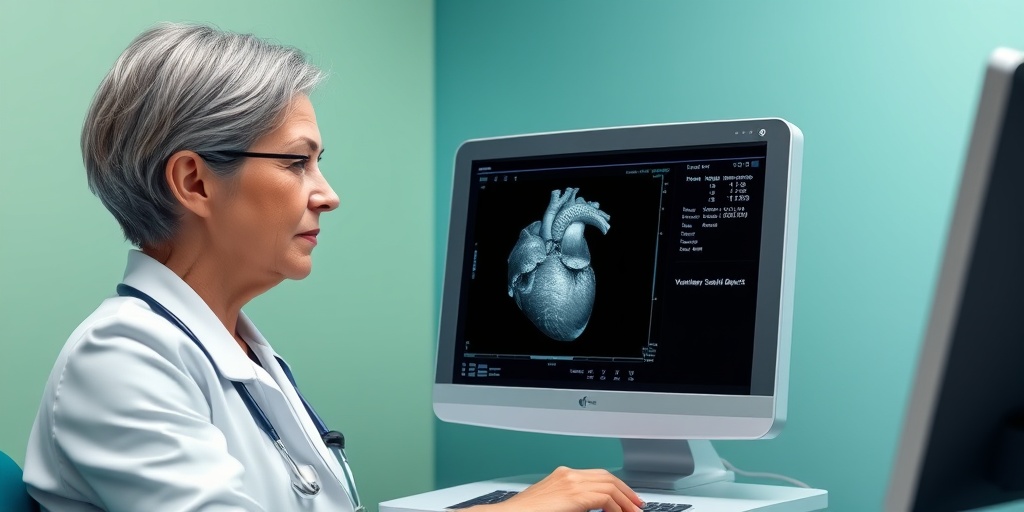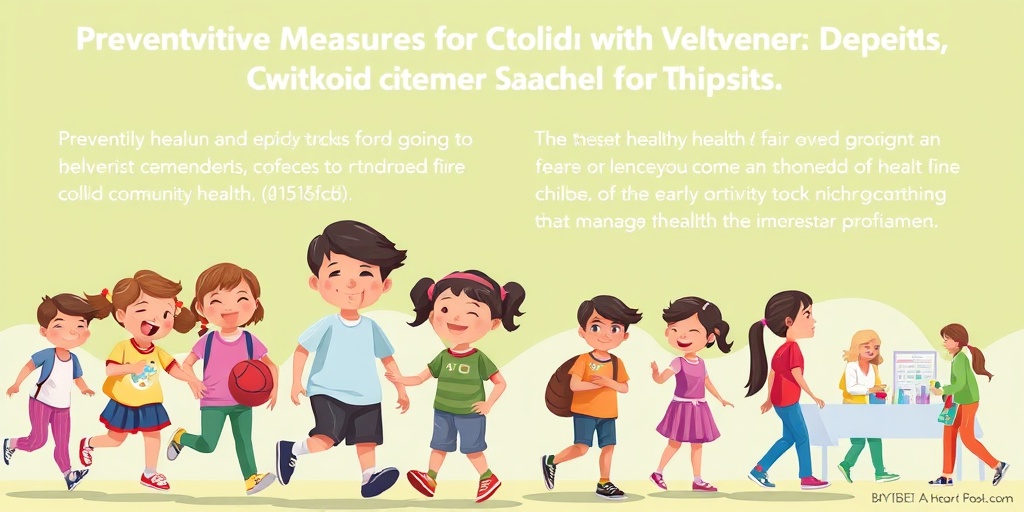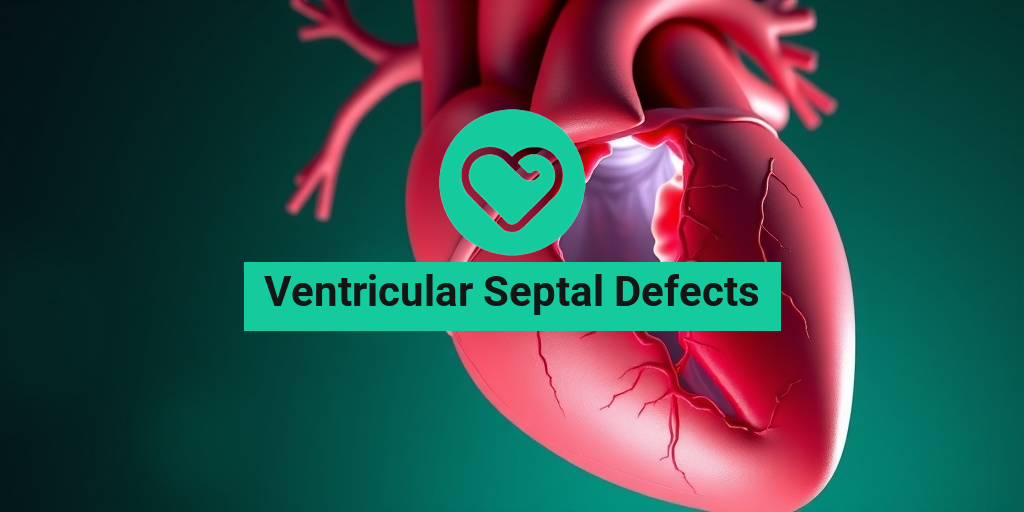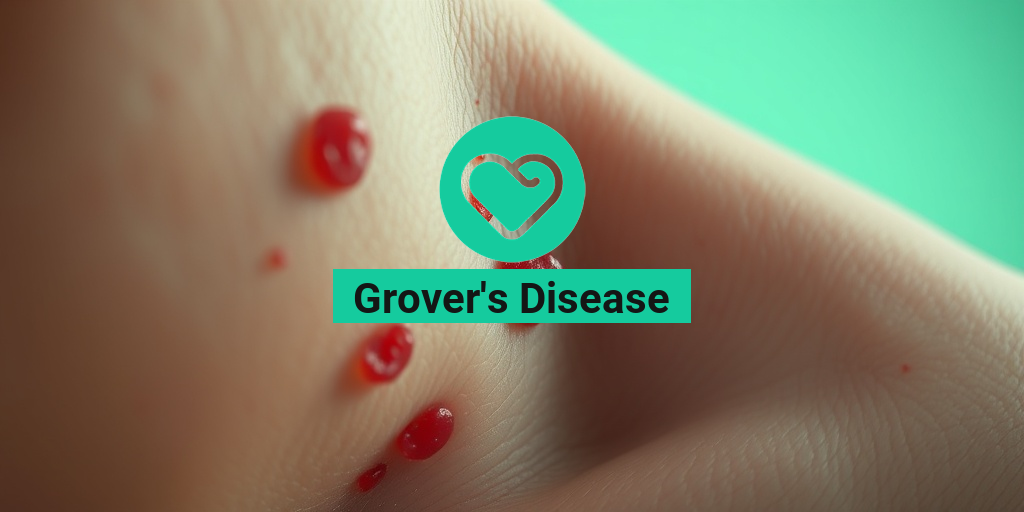What Are Ventricular Septal Defects?
Ventricular Septal Defects (VSDs) are congenital heart defects characterized by an abnormal opening in the septum that separates the heart’s two lower chambers, known as the ventricles. This defect allows blood to flow from the left ventricle to the right ventricle, which can lead to various complications if left untreated. VSDs are one of the most common types of congenital heart defects, affecting approximately 1 in every 500 live births. 🍼
Understanding the Anatomy
To grasp the implications of a VSD, it’s essential to understand the heart’s anatomy. The heart consists of four chambers: two atria (upper chambers) and two ventricles (lower chambers). The septum is a muscular wall that divides the left and right sides of the heart. In a healthy heart, this septum prevents the mixing of oxygen-rich blood from the left side with oxygen-poor blood from the right side. However, in the case of a VSD, this separation is compromised.
Types of Ventricular Septal Defects
Ventricular septal defects can be classified into several types based on their size and location:
- Perimembranous VSD: The most common type, located near the heart valves.
- Muscular VSD: Found in the muscular part of the septum, these can occur in various locations.
- Outlet VSD: Located near the outflow tract of the right ventricle.
- Conal VSD: A rare type that occurs in the conal septum.
Each type can vary in severity, influencing the treatment approach and potential outcomes for the patient.
Causes and Risk Factors
The exact cause of ventricular septal defects is often unknown, but several factors may contribute to their development:
- Genetic Factors: A family history of congenital heart defects can increase the risk.
- Environmental Factors: Maternal exposure to certain medications, alcohol, or infections during pregnancy may play a role.
- Other Health Conditions: Conditions such as diabetes or obesity in the mother can also increase the risk of VSDs.
Symptoms of Ventricular Septal Defects
The symptoms of ventricular septal defects can vary significantly depending on the size of the defect and the amount of blood flow that is shunted from the left to the right ventricle. Some individuals may experience no symptoms at all, while others may exhibit noticeable signs. Here are some common symptoms associated with VSDs:
Common Symptoms in Infants
In infants, symptoms may include:
- Rapid Breathing: Increased respiratory rate due to the heart working harder.
- Poor Feeding: Difficulty feeding or tiring easily during feeding sessions.
- Failure to Thrive: Inadequate weight gain or growth.
- Heart Murmur: A characteristic sound heard during a physical examination.
Symptoms in Older Children and Adults
In older children and adults, symptoms may include:
- Fatigue: Increased tiredness during physical activities.
- Shortness of Breath: Difficulty breathing during exertion.
- Swelling: Swelling in the legs, abdomen, or around the eyes.
- Frequent Respiratory Infections: Increased susceptibility to lung infections.
When to Seek Medical Attention
If you notice any of these symptoms in your child or yourself, it is crucial to consult a healthcare professional. Early diagnosis and treatment can significantly improve outcomes for individuals with ventricular septal defects. 🩺
For more detailed information and resources on ventricular septal defects, consider visiting Yesil Health AI, where you can find evidence-based health answers tailored to your needs.
In conclusion, understanding ventricular septal defects is vital for early detection and effective management. Whether in infants or adults, recognizing the symptoms and seeking timely medical advice can lead to better health outcomes.

Causes and Risk Factors
Ventricular Septal Defects (VSDs) are congenital heart defects characterized by an abnormal opening in the ventricular septum, the wall dividing the heart’s lower chambers. Understanding the causes and risk factors associated with VSDs is crucial for early detection and management.
Genetic Factors
One of the primary causes of VSDs is genetic predisposition. Certain genetic syndromes, such as Down syndrome and Turner syndrome, are associated with a higher incidence of congenital heart defects, including VSDs. If there is a family history of heart defects, the risk of having a child with a VSD may increase.
Environmental Influences
Environmental factors during pregnancy can also contribute to the development of VSDs. Some of these factors include:
- Maternal diabetes: Women with uncontrolled diabetes during pregnancy have a higher risk of having babies with congenital heart defects.
- Alcohol consumption: Drinking alcohol during pregnancy can lead to fetal alcohol syndrome, which is linked to various heart defects.
- Medications: Certain medications taken during pregnancy, such as anti-seizure drugs, may increase the risk of VSDs.
Other Risk Factors
In addition to genetic and environmental factors, other risk factors may contribute to the likelihood of developing VSDs:
- Maternal age: Women over the age of 35 may have a higher risk of having a child with congenital heart defects.
- Infections during pregnancy: Infections such as rubella can affect fetal development and increase the risk of heart defects.
- Obesity: Maternal obesity has been linked to an increased risk of congenital heart defects.
Understanding these causes and risk factors can help in the early identification and management of ventricular septal defects, ultimately improving outcomes for affected individuals. 🩺
Diagnosis of Ventricular Septal Defects
Diagnosing ventricular septal defects is a critical step in managing this condition effectively. Early diagnosis can lead to timely interventions, which can significantly improve a patient’s quality of life.
Clinical Evaluation
The diagnosis of VSD typically begins with a thorough clinical evaluation. Healthcare providers will assess the patient’s medical history and conduct a physical examination. During the examination, the doctor may listen for characteristic heart murmurs, which are often indicative of a VSD. These murmurs occur due to the abnormal blood flow between the heart chambers.
Imaging Techniques
To confirm the diagnosis of VSD, several imaging techniques may be employed:
- Echocardiogram: This is the most common and effective test for diagnosing VSDs. An echocardiogram uses sound waves to create images of the heart, allowing doctors to visualize the defect and assess its size and location.
- Chest X-ray: A chest X-ray can help determine the size of the heart and the presence of any fluid in the lungs, which may indicate heart failure.
- Electrocardiogram (ECG): An ECG records the electrical activity of the heart and can help identify any irregularities in heart rhythm that may be associated with VSDs.
Advanced Diagnostic Tools
In some cases, more advanced diagnostic tools may be necessary:
- Cardiac MRI: This imaging technique provides detailed images of the heart’s structure and function, helping to assess the severity of the defect.
- Cardiac catheterization: This invasive procedure involves threading a thin tube through blood vessels to the heart. It can provide detailed information about the heart’s anatomy and blood flow.
Early diagnosis of ventricular septal defects is essential for effective treatment planning. If you suspect that you or your child may have a VSD, consult a healthcare professional for a comprehensive evaluation. 🩺❤️

Complications Associated with VSD
Ventricular Septal Defects (VSDs) are congenital heart defects characterized by an opening in the ventricular septum, the wall dividing the heart’s lower chambers. While some individuals with VSDs may lead relatively normal lives, others can experience significant complications. Understanding these potential issues is crucial for effective management and treatment.
Heart Failure
One of the most serious complications associated with VSDs is heart failure. This occurs when the heart cannot pump enough blood to meet the body’s needs. In patients with VSD, the left-to-right shunt can lead to increased blood flow to the lungs, causing pulmonary congestion and ultimately heart failure. Symptoms may include:
- Shortness of breath
- Fatigue
- Swelling in the legs and abdomen
Pulmonary Hypertension
Pulmonary hypertension is another significant complication that can arise from untreated VSDs. The increased blood flow to the lungs can cause the blood vessels in the lungs to become narrowed and stiff, leading to elevated blood pressure in the pulmonary arteries. This condition can result in:
- Chest pain
- Dizziness or fainting
- Worsening shortness of breath
Arrhythmias
Individuals with VSDs may also be at risk for arrhythmias, which are irregular heartbeats. The structural changes in the heart due to the defect can disrupt the normal electrical pathways, leading to conditions such as atrial fibrillation or ventricular tachycardia. Symptoms of arrhythmias can include:
- Palpitations
- Lightheadedness
- Chest discomfort
Endocarditis
Endocarditis is an infection of the inner lining of the heart, which can occur in individuals with VSDs. The presence of a defect can create turbulent blood flow, increasing the risk of bacteria adhering to the heart’s structures. Symptoms of endocarditis may include:
- Fever
- Chills
- Fatigue
- New or changing heart murmurs
Growth and Development Issues
In infants and children, VSDs can lead to growth and development issues. The increased workload on the heart and lungs can result in poor weight gain and delayed milestones. Regular monitoring and early intervention are essential to ensure healthy development.
Treatment Options for Ventricular Septal Defects
Treatment for Ventricular Septal Defects varies based on the size of the defect, the symptoms presented, and the age of the patient. Here are the primary treatment options available:
Observation
In cases where the VSD is small and not causing significant symptoms, observation may be the best course of action. Many small VSDs close on their own as the child grows, and regular check-ups can help monitor the condition.
Medications
For patients experiencing symptoms, medications may be prescribed to manage heart failure or pulmonary hypertension. Common medications include:
- Diuretics to reduce fluid buildup
- ACE inhibitors to lower blood pressure and reduce heart workload
- Beta-blockers to manage heart rate and rhythm
Catheter-Based Procedures
In some cases, catheter-based procedures can be used to close the VSD. This minimally invasive approach involves inserting a catheter through a blood vessel and placing a device to seal the defect. This option is often preferred for patients who are not suitable candidates for open-heart surgery.
Open-Heart Surgery
For larger VSDs or those causing significant symptoms, open-heart surgery may be necessary. During this procedure, the surgeon will repair the defect by stitching it closed or using a patch. This option is typically recommended for infants and children who are experiencing complications.
Long-Term Management
Regardless of the treatment chosen, long-term management is crucial for individuals with VSDs. Regular follow-ups with a cardiologist are essential to monitor heart function and detect any potential complications early. Lifestyle modifications, such as a healthy diet and regular exercise, can also support overall heart health.
In conclusion, while Ventricular Septal Defects can lead to various complications, understanding the treatment options available can help manage the condition effectively. Early diagnosis and intervention are key to ensuring a healthy and active life for those affected. ❤️

Living with Ventricular Septal Defects
Ventricular Septal Defects (VSDs) are congenital heart defects characterized by an opening in the septum that separates the heart’s two lower chambers, the ventricles. This condition can lead to various complications, but many individuals with VSDs lead fulfilling lives with proper management and care. Understanding how to live with VSDs is crucial for both patients and their families.
Understanding the Impact of VSDs
Living with a ventricular septal defect can vary significantly from person to person. Some individuals may experience mild symptoms, while others may face more severe complications. The size and location of the defect play a critical role in determining the impact on health. Here are some common aspects to consider:
- Symptoms: Many people with VSDs may not exhibit noticeable symptoms, especially if the defect is small. However, larger defects can lead to symptoms such as shortness of breath, fatigue, and frequent respiratory infections.
- Monitoring: Regular check-ups with a cardiologist are essential. These appointments often include echocardiograms to monitor the size of the defect and assess heart function.
- Medications: Some individuals may require medications to manage symptoms or prevent complications, such as diuretics to reduce fluid buildup or medications to help the heart pump more effectively.
Emotional and Psychological Considerations
Living with a chronic condition like a VSD can also take an emotional toll. Patients and their families may experience anxiety or stress related to health concerns. Here are some strategies to cope:
- Support Groups: Connecting with others who have similar experiences can provide emotional support and practical advice.
- Counseling: Professional counseling can help individuals and families navigate the emotional challenges associated with living with a heart defect.
- Education: Understanding the condition can empower patients and families, reducing fear and uncertainty.
Preventive Measures and Outlook
While ventricular septal defects are congenital, there are several preventive measures and lifestyle choices that can help manage the condition and improve overall health. Understanding the outlook for individuals with VSDs is also essential for planning and care.
Preventive Measures
Taking proactive steps can significantly enhance the quality of life for those living with VSDs. Here are some preventive measures to consider:
- Healthy Lifestyle: Maintaining a balanced diet, engaging in regular physical activity, and avoiding smoking can help support heart health.
- Regular Check-ups: Consistent monitoring by a healthcare provider is crucial. This includes routine echocardiograms and consultations to assess heart function and detect any changes early.
- Vaccinations: Staying up-to-date with vaccinations, especially for respiratory infections, can help prevent complications.
Outlook for Individuals with VSDs
The outlook for individuals with ventricular septal defects varies widely based on several factors, including the size of the defect, associated heart conditions, and the age at which treatment is initiated. Here are some key points regarding the prognosis:
- Small Defects: Many individuals with small VSDs may not require treatment and can lead normal lives with regular monitoring.
- Larger Defects: Larger VSDs often require surgical intervention, especially if they cause significant symptoms or complications. With timely treatment, many patients can expect a good quality of life.
- Long-term Care: Even after treatment, individuals with VSDs should continue to have regular follow-ups to monitor heart health and manage any potential long-term effects.
In conclusion, living with ventricular septal defects involves a combination of medical management, lifestyle adjustments, and emotional support. By understanding the condition and taking proactive steps, individuals can lead healthy, fulfilling lives. 🌟

Frequently Asked Questions about Ventricular Septal Defects
What are Ventricular Septal Defects (VSDs)?
Ventricular Septal Defects are congenital heart defects characterized by a hole in the wall (septum) that separates the two lower chambers of the heart (ventricles). This condition can lead to abnormal blood flow between the heart’s chambers, potentially causing various health issues.
What are the types of Ventricular Septal Defects?
Ventricular Septal Defects can be classified into several types, including:
- Perimembranous VSD: Located near the heart valves.
- Muscular VSD: Found in the muscular part of the septum.
- Outlet VSD: Located near the outflow tract of the right ventricle.
- Inlet VSD: Found near the inlet of the ventricles.
What are the symptoms of Ventricular Septal Defects?
Symptoms of ventricular septal defects can vary based on the size of the defect and the amount of blood flow. Common symptoms include:
- Shortness of breath
- Fatigue
- Rapid breathing
- Frequent respiratory infections
- Poor growth in infants
How are Ventricular Septal Defects diagnosed?
Diagnosis of ventricular septal defects typically involves:
- Physical examination
- Chest X-ray
- Echocardiogram
- Electrocardiogram (ECG)
What treatments are available for Ventricular Septal Defects?
Treatment options for ventricular septal defects depend on the size of the defect and the symptoms present. They may include:
- Monitoring for small defects that may close on their own
- Medications to manage symptoms
- Surgical repair for larger defects
Can adults have Ventricular Septal Defects?
Yes, while ventricular septal defects are often diagnosed in infants, they can also be present in adults. Some individuals may not experience symptoms until later in life, making it essential for adults with a history of congenital heart defects to undergo regular check-ups.
What is the long-term outlook for individuals with Ventricular Septal Defects?
The long-term outlook for individuals with ventricular septal defects varies based on the size of the defect and the effectiveness of treatment. Many individuals lead healthy lives, especially with timely medical intervention.
Are there any lifestyle changes recommended for those with Ventricular Septal Defects?
Individuals with ventricular septal defects may be advised to:
- Maintain a healthy diet
- Engage in regular physical activity, as recommended by a healthcare provider
- Avoid smoking and excessive alcohol consumption
Where can I find more information about Ventricular Septal Defects?
For more detailed information, consider consulting healthcare professionals or reputable medical websites that specialize in congenital heart defects. 📚




